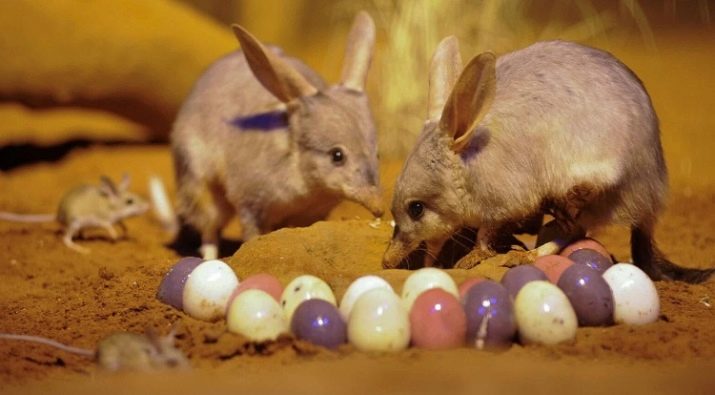Overview of Easter symbols
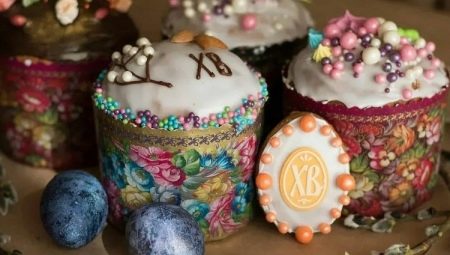
An overview of Easter symbols begins with 7 main attributes of the most revered passing holiday of the year, but these are far from all the attributes with which believers are trying to honor its coming. The more time passes from the onset of the day, which is already more than two millennia, the more carefully the traditions are observed by the believers.
Attributes and symbols are a way not only to prove your religiosity, but also to preserve the age-old memory of your ancestors. Therefore, it is significant that they are also used by those who do not consider themselves to be true believers, do not observe fasts and do not go to church.
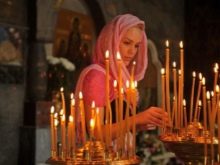
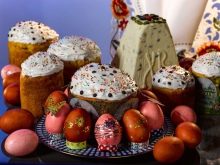
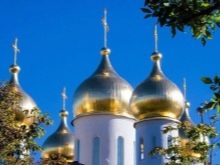
What does Easter cake mean?
Cross, traditional red color, lamb (real or sweet), rabbit, cottage cheese Easter and eggs - all this is an old Christian tradition, which is observed in Russia in a peculiar and partial way. The Orthodox holiday takes place on its own date, it stands apart from the Catholic and Jewish Passover. The name of one of the main attributes of the Easter celebration, reminiscent of the Resurrection of Christ, is also Russian.
The Eastern Slavs baked high and round festive bread, with decorations lovingly fashioned from the dough and placed on top.
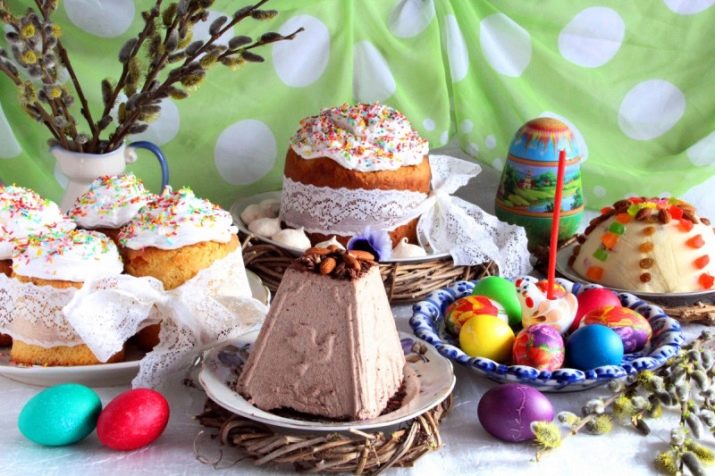
The main attribute of Great Sunday could be in the form of a pie with berries (open) or prosphora. The shape of the cylinder appeared later and is associated with artos, leavened bread, which, according to legend, was left at the table to Jesus Christ, who came to them for a meal:
- Easter cake, like artos, is an attribute of the holiday, which was previously prepared in a parish bakery or in monasteries and distributed to believers;
- now it is baked at home, but the symbolism and use remain the same - baking, consecration and eating symbolize the Rebirth of the Savior, family and church traditions;
- The Church is convinced that this is not a pagan symbol, although there is a tradition of baking, which was brought as a gift to the gods of fertility and harvest;
- However, now an Easter meal is unthinkable without Easter cake, and the difference is found not only in the form, but also in the composition of the dough, the place of baking and traditions - consecration, exchange with each other, treats and words that accompany the ceremony.
This is not a symbol of the coming of spring, but the incorruption of the most important thing in religion and the division of faith between its adherents. They eat cake on Easter Sunday, like the Savior with his apostles.
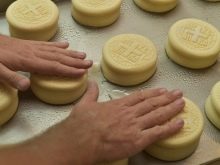
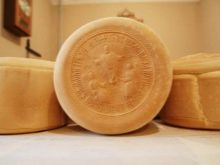

The meaning of eggs
This rite in Orthodoxy attaches special importance, although the church has its own logical explanation. Emperor Tiberius replied to Mary Magdalene, who handed him an egg as a symbol of the resurrection of Jesus, that there is no resurrection of the dead and eggs are not red. The egg turned red, and from that moment on it means victory over death, symbolizes the rebirth of life.
Over the centuries, the tradition of dyeing eggs only red or green has undergone changes. Now they are gilded, decorated with ready-made stickers, painted by hand, made from different materials - glass, chocolate, gold and precious stones. But the rituals and fortune-telling associated with them, adopted by the people, have somewhat lost their meaning and have been forgotten.
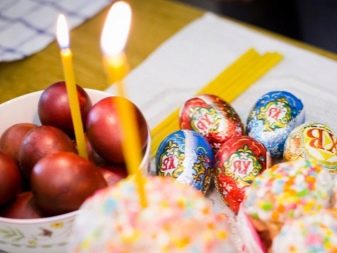
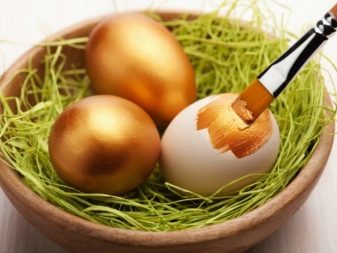
Easter Bunny
Such a hare is a symbol inherent in Catholicism, in which it is believed that this animal brings Easter eggs to children. Among the Scandinavians, the hare was a symbol of the Mother Goddess, among the Catholic monks it was associated with the immaculate conception, and the ancient origins of such an identification may be associated with spring and the ability of hares to reproduce quickly.
In the Middle Ages, it was believed that the Easter bunny carries special eggs and hides them in secluded places. Therefore, their parents hid them for the children, and the search for eggs turned into an annual hunt for the Easter bunny. Orthodox believers are increasingly using this symbol, but it is inherent in Catholicism, and this subtle distinction is ignored due to ignorance of the intricacies of confessions.
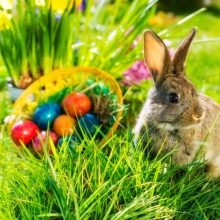
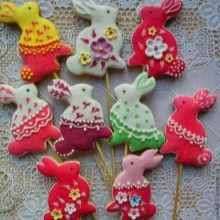

Other symbols
The willow is a symbol transformed by Orthodoxy. From a symbol of spring and fertility, the willow has turned into an analogue of a palm branch. They were abandoned by believers during the coming of Jesus after wandering in the wilderness, strict restrictions and spiritual cleansing. The holiday is called the Entry of the Lord into Jerusalem, its second name among the Orthodox is Palm Sunday. Instead of a palm tree, which does not grow in temperate climates, another plant was chosen, especially revered by the pagans. He was given magical properties and a special meaning.
Palm Sunday is celebrated shortly before Easter, and tree branches are widely used in it. After consecration, they are placed near the icons, in sheds and barns, above the entrance to the premises with animals. The willow is a rebirth, fertility, the arrival of spring. Once they were placed in the hands of the dead before burial, so that they would overcome death like the Savior.
Other Christian denominations have their own symbols with a sacred meaning, sometimes borrowed from early folk traditions.

Lamb
The lamb has a double meaning. Jesus Christ is called in the Bible the Lamb of God as a symbol of the immaculate sacrifice made to save people from the wrath of God. People were saved by Jesus from the captivity of sins and eternal condemnation for committing them. The original sources are from the Old Testament, where the Jews were instructed to anoint the doorframes with the blood of a sacrificial animal in order to avoid the tenth execution - the death of the firstborn male. The animal itself had to be fried and eaten; since then, a traditional lamb has been prepared in some countries for Easter.
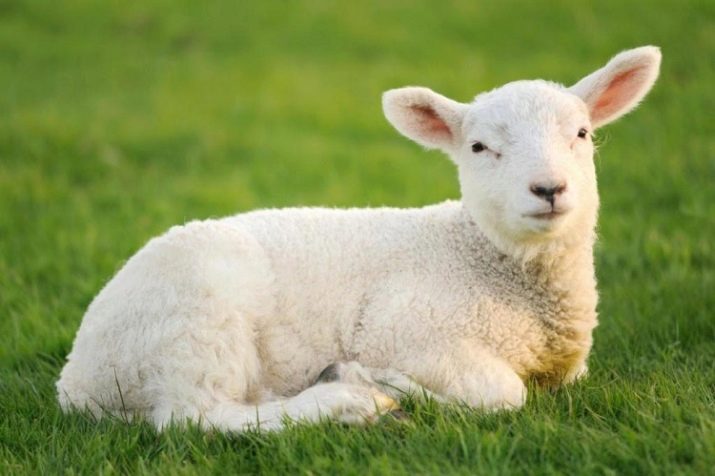
Curd Easter
The dish originally had the shape of a pyramid and was decorated with images of a cross, copies as symbols of suffering endured by Jesus, the letters "ХВ". The pyramidal shape symbolizes the empty Tomb of the Lord, found without a body on the morning of Easter Sunday.
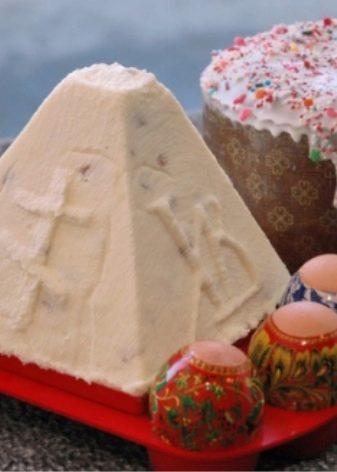

Cross
The cross is not only the place of the crucifixion of Jesus Christ, but also the main symbol of the Christian faith, which every confession has, in its original or transformed form. Before the significant event that led to the salvation of mankind, it was an attribute of shameful execution and painful death. But after Christ the Savior was crucified, the cross began to symbolize the promise of eternal life to every adherent of this religion.
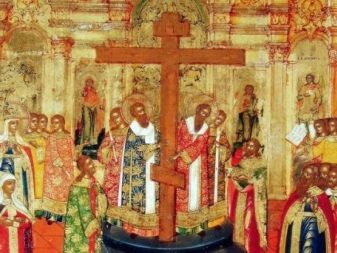
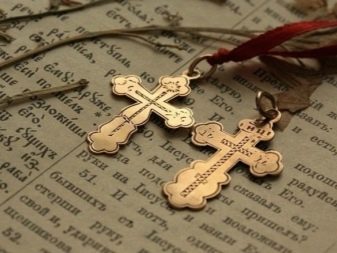
Red color
A generally accepted tradition prescribes the carrying out of the shroud on Good Friday in red; Easter eggs were previously painted in it. Among Christians, this shade proclaims Christ as the King of Heaven and at the same time reminds of the blood shed during the crucifixion in the name of saving all mankind from the wrath of God.
In pagan beliefs, the color was considered ceremonial and elegant, beautiful and red - the words of one root, and if we consider that the holiday is reminiscent of the triumph of life over death, it is appropriate to remember that winter is invariably won by spring-red.

Symbols in different countries
In Russia, the symbol of the Easter holiday was sprouted grain, which was certainly placed on the table. Later, for this purpose, hyacinths were used, which died away for the winter and bloomed in spring - symbols of rebirth, the triumph of life. There are similar motives and radically different ones:
- in Germany it is customary to decorate houses and trees with colorful ribbons, to place daffodils everywhere and to decorate clothes with them;
- in Great Britain, installations on biblical subjects are arranged, a lily flower and a lamb are the main attributes of this holiday in England;
- the differences in America are not cardinal - ham and potatoes, chocolate eggs, parades were taken during the Easter holidays;
- in France, the onset of Easter is symbolized not only by the lamb, but also by the chicken, hare, cow and sheep, which signify the indulgence of grace: they decorate the table with figures depicting them;
- in Greece, they paint eggs in a copper color, weave wreaths of palm leaves, burn the effigy of the traitor Judas;
- in Spain, an egg is baked in a kulich, and doves fly in the sky as a symbol of the integrity of the soul;
- in Canada, the proximity to the USA affects, there are carnivals, festivals and processions, a wide variety of treats - chicken, ham, lamb, baked vegetables;
- in Italy, the main event is the Mass at the Vatican Square;
- in Austria, wax animals and souvenirs are sold in the markets.
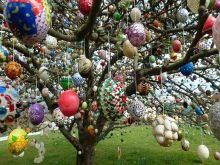
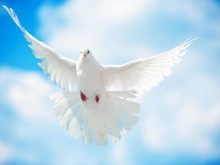

Traditions in different countries suggest some difference in the range of dishes that are usually eaten with the onset of the holiday. Somewhere this is a banal spinach plant baked with nuts, a lamb or chicken has been preserved in Australia, but fruit meringue cake is served for sweets, and the Australian aborigine, the bilby animal, which flaunts on all Easter souvenirs, is considered the symbol of the holiday.
In Spain, France, as well as in Russia, there are differences due to the specifics of the region, which they sacredly adhere to, not forgetting about the other 7 main symbols of Bright Sunday.
